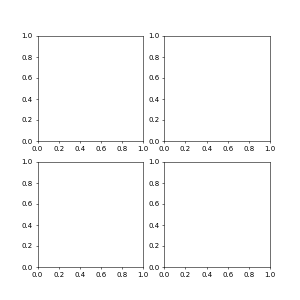The normed = True argument to the histogram makes the histogram plot the density of the distribution. From the documentation:
normed : boolean, optional
If True, the first element of the return tuple will be the counts normalized to form a probability density, i.e., n/(len(x)`dbin), i.e., the integral of the histogram will sum to 1. If stacked is also True, the sum of the histograms is normalized to 1.
Default is False
This means that the hight of the histogram bar depends on the bin width. If only one data point is plotted as is the case at the beginning of the animation the bar height will be 1./binwidth. If the bin width is smaller than zero, the bar height might become very large.
It's therefore a good idea to fix the bins and use them throughout the animation.
It's also reasonable to clear the axes such that there are not 100 different histograms being plotted.
import numpy as np
from matplotlib.pylab import *
import matplotlib.animation as animation
# generate 4 random variables from the random, gamma, exponential, and uniform distribution
x1 = np.random.normal(-2.5, 1, 10000)
x2 = np.random.gamma(2, 1.5, 10000)
x3 = np.random.exponential(2, 10000)+7
x4 = np.random.uniform(14,20, 10000)
fig, ((ax1, ax2), (ax3, ax4)) = plt.subplots(2, 2)
def updateData(curr):
if curr <=2: return
for ax in (ax1, ax2, ax3, ax4):
ax.clear()
ax1.hist(x1[:curr], normed=True, bins=np.linspace(-6,1, num=21), alpha=0.5)
ax2.hist(x2[:curr], normed=True, bins=np.linspace(0,15,num=21), alpha=0.5)
ax3.hist(x3[:curr], normed=True, bins=np.linspace(7,20,num=21), alpha=0.5)
ax4.hist(x4[:curr], normed=True, bins=np.linspace(14,20,num=21), alpha=0.5)
simulation = animation.FuncAnimation(fig, updateData, interval=50, repeat=False)
plt.show()

